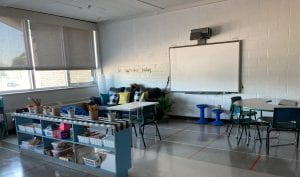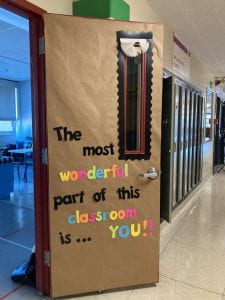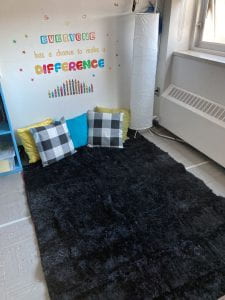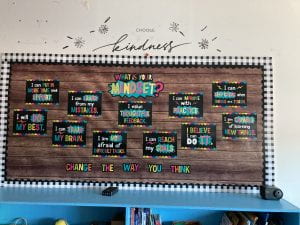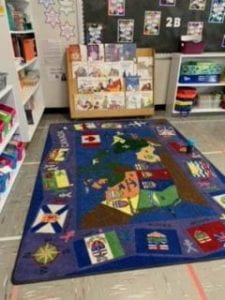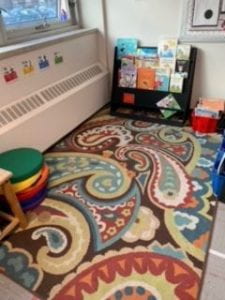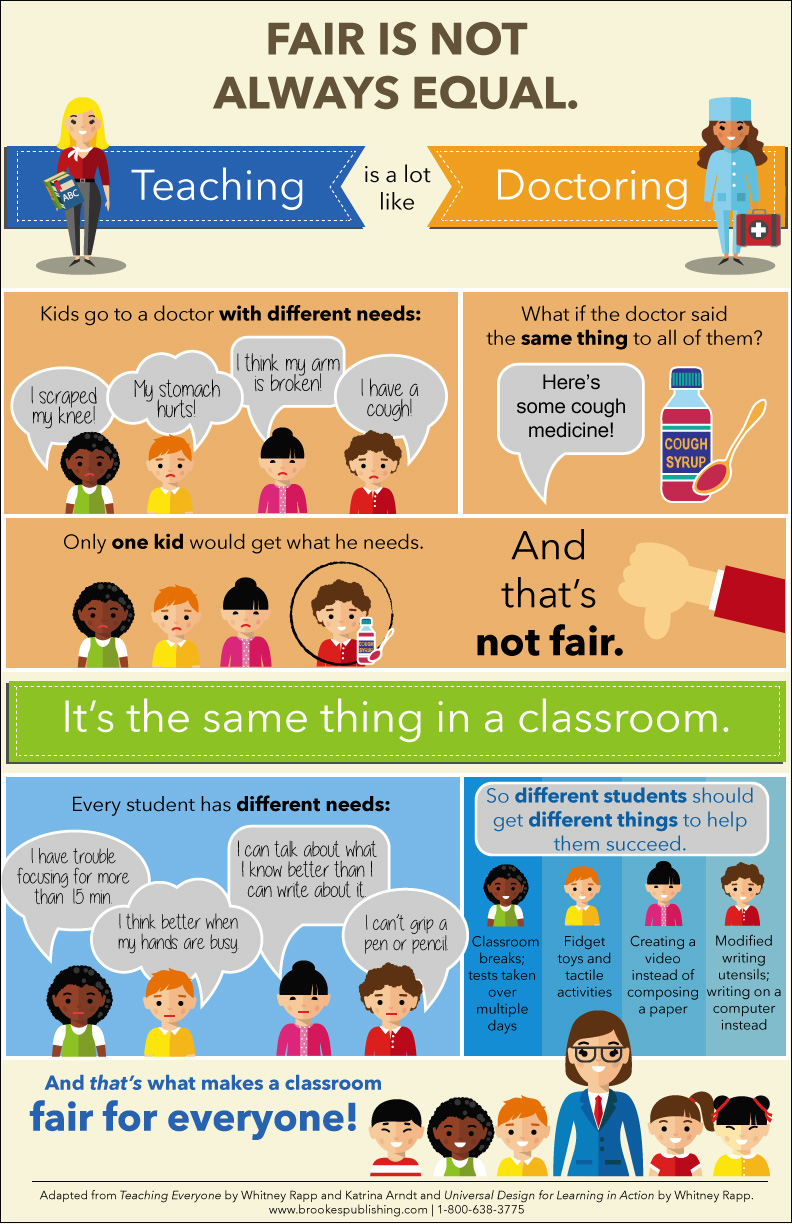The OJCS is Ahead of Its Time with the Science of Reading!
I am so beyond excited to be writing this post. As most of you are probably aware, there is finally a positive push thanks to the Science of Reading, including the Ontario Human Rights Commission and their Right to Read Inquiry Report on how best to teach reading based on scientific evidence. Our school has been engaged in this process to better understand what the “Science of Reading” means to our entire Language Arts philosophy, how we teach reading and spelling at the youngest grades, how it connects to our North Stars and how all of that connects to our school’s fundamental beliefs about how children learn best. I have been studying the Science of Reading for quite some time and I am bursting with pride that we are finally making headway, not just in our school but in all schools in Ontario and hopefully beyond. As you may recall, one of my passions is teaching students how to read and spell. I’ve been studying, learning, and teaching (students and teachers) through the Structured Word Inquiry philosophy for 15 years!! Do you recall my post in December of 2019 found here? This is when I really started investing lots of energy in giving PD to the OJCS teachers.
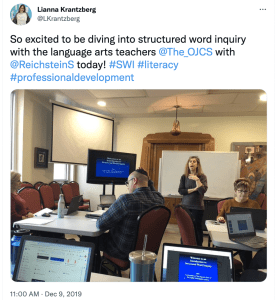
Since that time I’ve continued to give PD sessions to many of our teachers who are now invested in this incredible practice. Last year I held regular SWI pop-in sessions after school where teachers voluntarily came to learn. This summer we spent a whole day diving into more extensive learning and we continue to offer SWI sessions during our PD days.
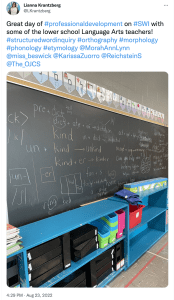
When I first dove head first into this learning 15 years ago (thanks to Dr. Peter Bowers at wordworkskingston), there was definitely scientific evidence to support that this was the right way to teach reading and spelling, but unfortunately, it was not yet well known and the resources to support the teaching were limited. I spent countless hours creating material and working with a small group of SWI enthusiasts learning and learning and learning some more. I’ve spent the last several years giving PD to our teachers and it has been so exciting to see the enthusiasm and knowledge spread like wildfire through our classrooms. Morah Lianna dove in head first. She reminds me so much of me when I was first learning. I couldn’t get enough when I was first exposed to SWI and now I see that passion in her! I love her regular texts as she discovers new patterns or has a question about a word her class is stumped on. I remember feeling so angry and frustrated that no one ever taught me what I needed to know to be a better reader and speller. For example, I had no idea that the single silent <e> at the end of a word has so many jobs! Did you know that no English word ends in <v> hence the spelling of <have>, <love>, and <move>? Did you know that every syllable in English needs a vowel, which explains the spelling of <table> and <apple>? Or did you know that no English word wants to look like a plural when it’s not, so that explains <house> and <please>? And how about the fact that a <c> and <g> need an <e, i or y> beside it to be a soft sound – like <sauce> or <fudge>? So many reasons for the single silent <e> besides making a vowel say its name which seems to be the only thing we teach! Why don’t we teach students all the rules of English? Why has it always been a secret and why do so many think that English makes no sense when it’s actually so ordered and structured. Well, at the OJCS we teach all “these secrets” and have for some time.
Morah Lianna, Morah Ann-Lynn, Ms. Signer (before she retired), and Ms. Thompson (before Maternity leave), have been teaching this way for several years, well before the Science of Reading came out. Read Morah Lianna’s blog posts here to see how her students have been investigating English orthography. Or how about when Morah Ann-Lynn’s grade one class last year knew exactly how to spell <eight> and <neigbour> because they understood the trigraph <igh> and the pattern that happens when there is an <e> or <a> before it.
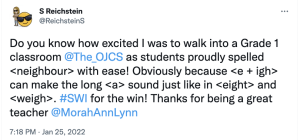
I also loved when Morah Lianna’s grade 2 class last year discovered that <-tion> is NOT a suffix and they knew how to prove it for the world to see!
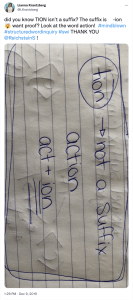
This year we have Morah Yaffa (now Mrs. Bennett) and Ms. Karissa fully engaged and teaching phonemic awareness to their grade 1 classrooms, as well as Ms. Beswick teaching it to our primary resource groups.
Thanks to the Science of Reading and the growing popularity and knowledge of how children learn to read, there are oodles of supporting resources for our teachers to use. We are beyond excited to dive into a new resource arriving at our school this week from the University of Florida Literacy Institute (UFLI) which will further support the learning and growth of our teachers. I couldn’t be more proud of our school for being leaders in this area and for our continued commitment to teaching reading and spelling supported by science! And this process, like all processes at the OJCS, will – in time – include not just our early-adopting teachers, but our full faculty and community. Stay tuned.
